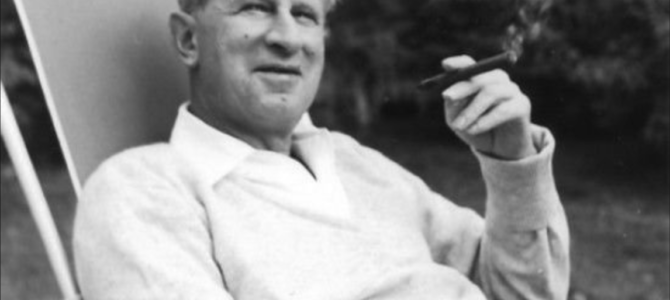
“All liberation depends on the consciousness of servitude,” wrote Herbert Marcuse in 1964. By liberation, the German-American academic made abundantly clear he meant bringing central planning to America. It was the definition of “liberation” that Le Monde used in its headline the day after Pol Pot entered the Cambodian capital in 1975: “Phnom Penh Libéré.”
The Parisian newspaper has since apologized; the massacres carried out by the Khmer Rouge in the Killing Fields of Cambodia became too much of an embarrassment. But The New York Times undoubtedly will never apologize for its deceptive “1619 Project.”
Replete with essays that present slavery as the central issue of the American story, and accuse “the brutal” free market of creating such bondage, the series is but yet another attempt to make Americans question their country’s very core. It follows Marcuse’s advice to completely transform America by stigmatizing its economic system and all its institutions.
To do that, you exaggerate America’s faults or outright employ falsehoods. As my Heritage Foundation colleague John York points out for The Daily Signal, the “1619 Project” is filled with historical inaccuracies.
The ‘1619 Project’ Will Infiltrate Classrooms
Being trash history won’t stop many of the country’s 132,000 public and private schools from using the “1619 Project.” Howard Zinn’s “A People’s History of the United States” has also been repeatedly debunked because of its bad scholarship. Yet educators use this earlier project in classrooms across America today to poison the minds of young Americans with hatred of their own nation. It remains the No. 7 best-selling history book on Amazon four decades after it was first published.
Further, the Zinn Education Project has spawned a cottage industry of “educational” material that burrowed even into middle school. Note to parents: Check the agate inscription at the bottom of the classroom notes your seventh-grade daughter or son brings home from school.
This is precisely the main danger of the “1619 Project.” The Times has turned it into curricula for classrooms that many, many of the nation’s 18,000 school districts will jump at. The point is not to grapple with history and all its nuances and then seek societal reconciliation. The “1619 Project” shatters history hammer-like with its opening statement — “Our democracy’s ideals were false when they were written” — and maintains the beat from there.
Edmund Burke wrote in 1790, “To make us love our country, our country ought to be lovely,” and Zinn, Marcuse, and the writers of the “1619 Project” understood that the obverse is also true: You make children believe their nation has been hideous from the start, and you have the makings of a peaceful revolution.
Marcuse Despised and Smeared Capitalism
Marcuse and the other critical theorists who came from Germany, escaping Adolf Hitler, discovered an America filled with happy consumers, and that royally bummed them out. “The people find themselves in their commodities: they find their soul in their automobile, hi-fi set, split-level home, kitchen equipment,” despaired Marcuse in 1964’s “One-Dimensional Man.”
Capitalism was too good and wouldn’t produce revolt. “It is a good way of life — much better than before, and as a good way of life, it militates against qualitative change,” he wrote. He left no doubt as to what he sought to put in its place: “Today, the opposition to central planning in the name of liberal democracy … serves as an ideological prop for repressive interests.”
The freedom that capitalism produced was an obstacle to the rationality of dirigisme, he thought: “Self-determination in the production and distribution of vital goods and services would be wasteful. … In this realm, centralized control is rational.”
But there was a ray of hope. Marcuse had taken note of the urban violence gathering speed in America. There was a new revolutionary base which — if properly organized by people like him, the ideological vanguard — could get the country to embrace central planning and technological rationality, and end all that wasteful self-determination.
“Underneath the conservative popular base is the substratum of the outcasts and outsiders, the exploited and persecuted of other races and other colors. The unemployed and the unemployable. … The fact that they start refusing to play the game may be the fact which marks the beginning of the end of a period,” he wrote.
The critical theory Marcuse and his colleagues created has now been recast as “critical race theory,” which dominates many academic disciplines, finding its way into faculties of law, English, philosophy, and more.
For Real Liberation, Look to America’s Founding Principles
The formula is simple: You constantly fill groups of people with grievances, maintain their permanent outrage, prevent their accession to society’s mainstream, keep them from joining the contented boobs of capitalism, and you achieve “qualitative change.” Repression would have to be used, Marcuse admitted.
Americans have dealt with repression before and were encouraged to vanquish it by those ideals the New York Times attempts to smear. Last week was the 158th anniversary of Abraham Lincoln’s preliminary Emancipation Proclamation, issued in 1862 in the midst of a bloody war waged to cleanse the sin of a repression known as slavery. The Civil Rights Act that came the year after Marcuse wrote these words finally ended the legal oppression and shame of Jim Crow.
But both Lincoln and Martin Luther King used the ideals of the founding as inspiration as they waged their struggle. They did not believe them to be false. These ideals liberated the country in 1776, 1865, and 1965.
These were crusades waged for freedom. The activism The New York Times is pursuing intends the opposite. Any school administrator who considers using this material should be aware.









